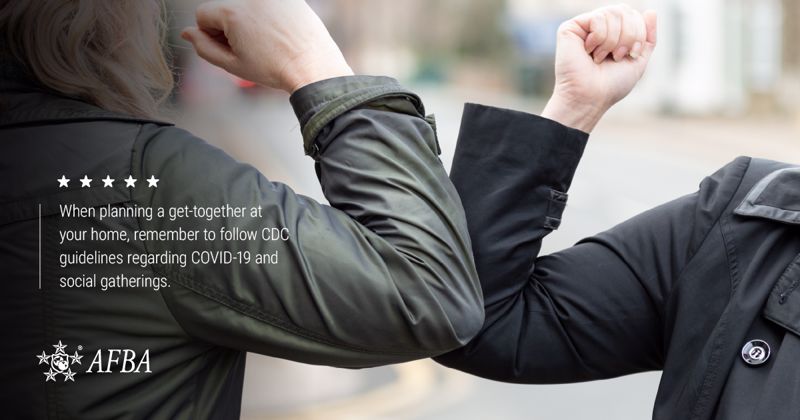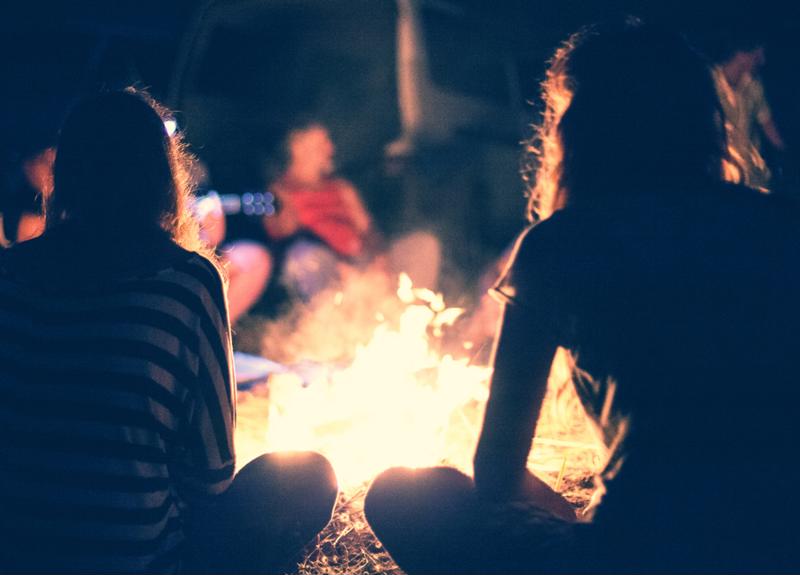If your summer travel plans have been canceled this year due to the COVID-19 pandemic, remember that you can still make memories in your own backyard. Sitting around a fire pit can be a fun way to kick back and enjoy the long summer nights — as long as everyone remains responsible.
Keep your family safe and make the first responders and firefighters in your community proud by practicing these important fire pit safety rules.
Choose the safest spot for your fire pit
Your fire pit should be located out in the open — never underneath a structure or tree. Since sparks can easily travel, ensure that you're not lighting a fire near a wall or fence, a pile of dried leaves or chopped wood or any other flammable materials.
Check for wind conditions and no-burn advisories
As for the weather, choose a calm night rather than a windy day. Beyond making it difficult to start a fire, wind can make flames unpredictable and scatter embers, potentially causing a fire outside of the pit. If your area is under a no-burn advisory, remain compliant and help keep your community and air quality safe.

Adhere to social distancing guidelines
When planning a get-together at your home, remember to follow CDC guidelines regarding COVID-19 and social gatherings. For the lowest risk of transmission, limit your gathering to only members of your household. If you invite other friends, neighbors or family members, keep six feet apart from each other at all times. With two families, for instance, you could place chairs on opposite sides of the fire pit so you don't come into contact. If you're enjoying snacks, drinks or s'mores ingredients, don't share supplies. Instead, ask each household unit to bring their own items.
Keep kids under adult supervision
Before the party even begins, take the opportunity to educate children on general fire safety habits. Once the flames start growing, children should be under constant adult supervision. Keep little ones at a safe distance from the fire pit and watch older kids to ensure that they don't toss anything into the fire or get too close to the flames.
Dress appropriately to minimize the risk of clothing fires or burns
Anyone who plans to attend to the fire or hold roasting sticks near the flames should be dressed properly, with closed-toe shoes, close-fitting garments and tied-back hair. Loose clothing and hair can more easily alight, and falling embers can burn bare feet. Remind your guests to "stop, drop and roll" if they need to extinguish a clothing fire.
Ensure that everyone drinks responsibly
An important aspect of fire pit safety comes down to how you and your guests behave around the open flames. If you choose to make alcoholic beverages part of your festivities, drink responsibility and in moderation. Alcohol-related accidents can create a host of hazards and injuries. Not only does alcohol impair your judgment and coordination but spills are highly flammable.
Don't mix flammable bug spray and fires
At night, mosquitos can be real pests, so you may be tempted to apply bug spray. But insect repellant is highly flammable and can lead to major injuries if your hair or clothes get showered with sparks. Smoke is a natural bug repellent, so spray should not be necessary.
Never leave the flames unattended
A critical aspect of fire pit safety is to always keep an eye on the flames. If you need to run inside for even a few seconds, ask a responsible guest to attend to the fire pit while you're away. Make sure they know how to extinguish it safely as well.
Fully extinguish embers before turning in for the night
After a night making memories and practicing backyard fire pit safety, you must remember to put out the fire and embers completely. Follow the Forest Services' step-by-step instructions: douse the live embers with water, rotate and scrape down logs to ensure they're no longer burning, mix the ashes with soil, check that everything is cool to the touch with your hands and add some more water before leaving the site.

